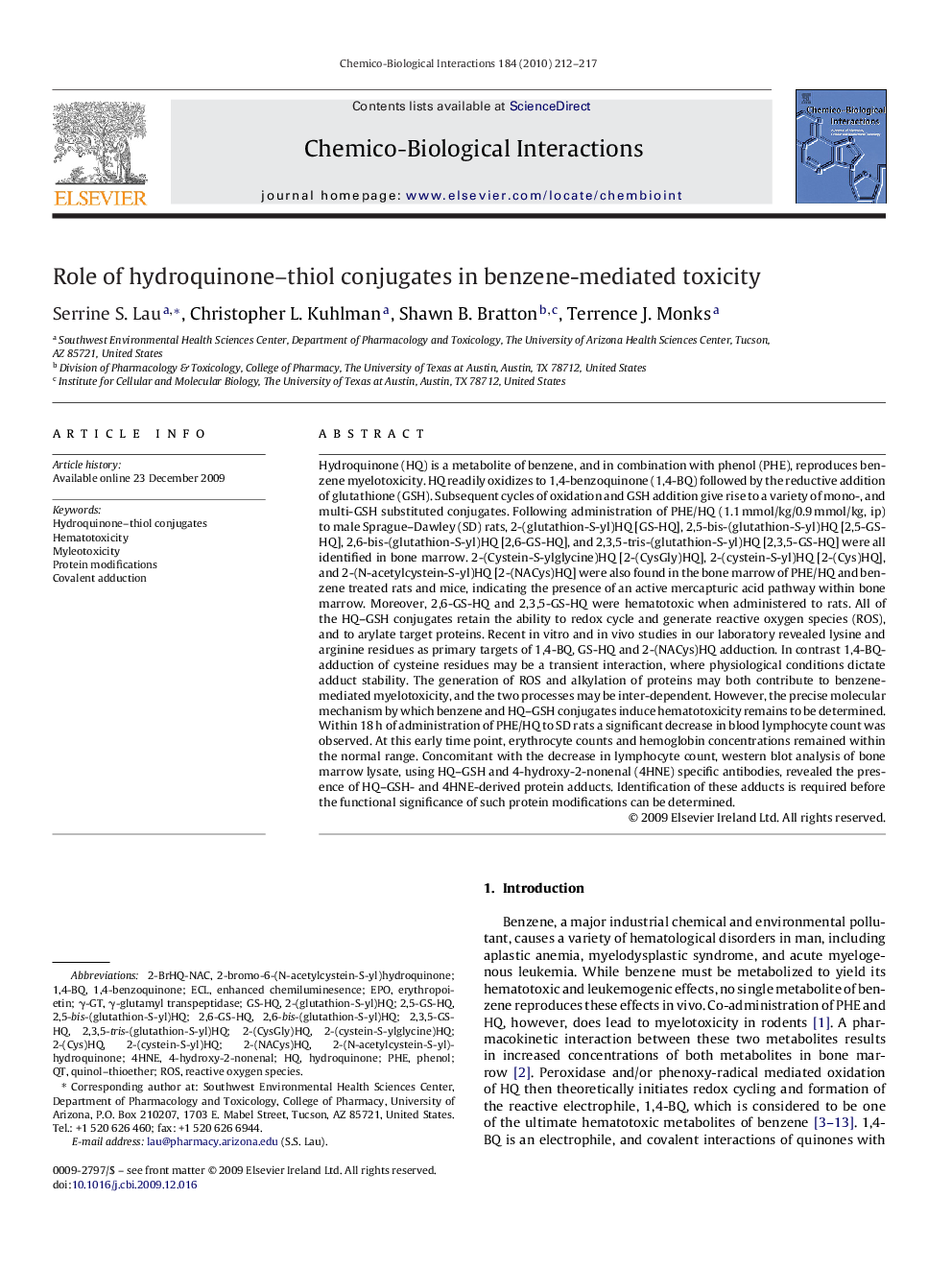| کد مقاله | کد نشریه | سال انتشار | مقاله انگلیسی | نسخه تمام متن |
|---|---|---|---|---|
| 2581151 | 1561647 | 2010 | 6 صفحه PDF | دانلود رایگان |

Hydroquinone (HQ) is a metabolite of benzene, and in combination with phenol (PHE), reproduces benzene myelotoxicity. HQ readily oxidizes to 1,4-benzoquinone (1,4-BQ) followed by the reductive addition of glutathione (GSH). Subsequent cycles of oxidation and GSH addition give rise to a variety of mono-, and multi-GSH substituted conjugates. Following administration of PHE/HQ (1.1 mmol/kg/0.9 mmol/kg, ip) to male Sprague–Dawley (SD) rats, 2-(glutathion-S-yl)HQ [GS-HQ], 2,5-bis-(glutathion-S-yl)HQ [2,5-GS-HQ], 2,6-bis-(glutathion-S-yl)HQ [2,6-GS-HQ], and 2,3,5-tris-(glutathion-S-yl)HQ [2,3,5-GS-HQ] were all identified in bone marrow. 2-(Cystein-S-ylglycine)HQ [2-(CysGly)HQ], 2-(cystein-S-yl)HQ [2-(Cys)HQ], and 2-(N-acetylcystein-S-yl)HQ [2-(NACys)HQ] were also found in the bone marrow of PHE/HQ and benzene treated rats and mice, indicating the presence of an active mercapturic acid pathway within bone marrow. Moreover, 2,6-GS-HQ and 2,3,5-GS-HQ were hematotoxic when administered to rats. All of the HQ–GSH conjugates retain the ability to redox cycle and generate reactive oxygen species (ROS), and to arylate target proteins. Recent in vitro and in vivo studies in our laboratory revealed lysine and arginine residues as primary targets of 1,4-BQ, GS-HQ and 2-(NACys)HQ adduction. In contrast 1,4-BQ-adduction of cysteine residues may be a transient interaction, where physiological conditions dictate adduct stability. The generation of ROS and alkylation of proteins may both contribute to benzene-mediated myelotoxicity, and the two processes may be inter-dependent. However, the precise molecular mechanism by which benzene and HQ–GSH conjugates induce hematotoxicity remains to be determined. Within 18 h of administration of PHE/HQ to SD rats a significant decrease in blood lymphocyte count was observed. At this early time point, erythrocyte counts and hemoglobin concentrations remained within the normal range. Concomitant with the decrease in lymphocyte count, western blot analysis of bone marrow lysate, using HQ–GSH and 4-hydroxy-2-nonenal (4HNE) specific antibodies, revealed the presence of HQ–GSH- and 4HNE-derived protein adducts. Identification of these adducts is required before the functional significance of such protein modifications can be determined.
Journal: Chemico-Biological Interactions - Volume 184, Issues 1–2, 19 March 2010, Pages 212–217